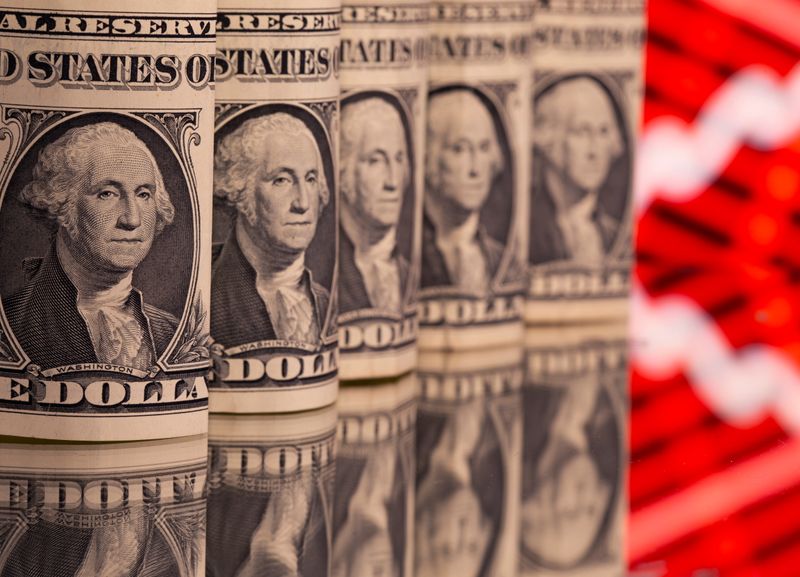By Herbert Lash and Joice Alves
NEW YORK/LONDON (Reuters) – The dollar strengthened on Thursday after unemployment claims pointed to a still strong U.S. jobs market and other data showed growing labor costs, indicating the Federal Reserve has further to go in raising interest rates to tame inflation.
The yield on two-year Treasury notes, which are sensitive to interest rate expectations, shot to levels last seen in July 2007 as the market perceives the Fed will raise rates further to curb rising consumer prices.
“This move higher that you’re seeing in U.S. rates is not happening in isolation,” said Alvise Marino, macro trading strategist at Credit Suisse in New York.
“Similar developments are happening in the rest of the world, in particular in Europe, mostly notably, where the inflation data keeps on surprising relatively strong,” he said.
Atlanta Fed President Raphael Bostic said on Thursday that the U.S. central bank was ready to keep lifting rates higher if inflation doesn’t slow and was still mulling how recent, stronger-than-anticipated inflation data might shape Fed policy.
The impact of higher rates on the economy may only begin to “bite” in earnest this spring, an argument for the Fed to stick with “steady” quarter-point rate increases, Bostic said.
“There’s more and more of a concern that incoming data is revealing that the Fed might be a little bit behind the curve than maybe they expected heading into this year,” said Bipan Rai, North America head of FX strategy at CIBC Capital Markets in Toronto.
Futures edged higher, with the market pricing a peak rate climbing to 5.493% in the fed funds by September, before easing a bit later in the session to 5.447%.
The number of Americans filing new claims for unemployment fell again last week, pointing to a still strong jobs market. Another Labor Department report showed labor costs grew much faster than previously estimated in the fourth quarter.
Graphic: US jobs https://www.reuters.com/graphics/GLOBAL-MARKETS/THEMES/znpnbxnkepl/US_jobs.jpg
The euro slid on data that showed inflation in the euro zone was not as high as investors had feared but remains elevated. Inflation eased to 8.5% from 8.6% in January on lower energy prices.
The dollar index, a basket of major trading currencies, rose 0.623%, while the euro fell 0.71% to $1.0589.
The market’s reaction to the euro zone data was muted at first following the euro’s 0.9% rise against the dollar on Wednesday, its biggest daily gain in a month, after data showed prices in Germany rose more than hoped last month.
Investors now see the ECB’s 2.5% deposit rate rising by a combined 100 basis points in March and May, then to around 4.1% at the turn of the year. Markets have priced in an extra 50 basis points of hikes in just the past month.
Policymakers were split in February on the type of signal they should send about the ECB’s next rate move, accounts of the central bank’s meeting on Feb. 2 showed on Thursday.
Sterling was held back by remarks from Bank of England Governor Andrew Bailey, who said “nothing is decided” on future rate increases, which led traders to trim bets on higher rates. Sterling traded at $1.194, down 0.76% on the day.
The Japanese yen weakened 0.44%, while the Australian and New Zealand dollars moved lower after strong gains on Wednesday driven by Chinese manufacturing data.
The offshore Chinese yuan rose 0.70% to $6.9265 per dollar.
Investors are looking ahead to China’s National People’s Congress meeting, which begins on Sunday, for guidance on policy support for the post-COVID recovery.
Bitcoin fell 0.81% to $23,442.00 after shares of Silvergate Capital (NYSE:SI) Corp fell more than half when the crypto-focused bank delayed its annual report and said it had sold additional debt securities.



